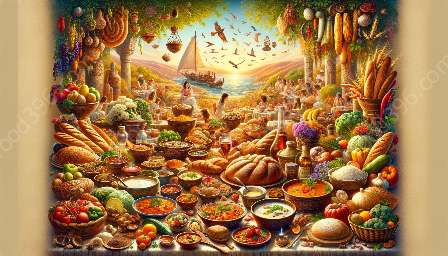Thai cuisine is not just about food; it is a reflection of the country's diverse culture, history, and geography. The cuisine is a harmonious blend of flavors, textures, and aromas that have been influenced by Thai regional cuisine and shaped by history. To truly understand Thai cuisine, one must delve into the regional variations, appreciate the historical context, and immerse oneself in the food culture of Thailand.
Regional Cuisine: A Diverse Tapestry
Thailand's regional cuisine is a rich tapestry woven from various influences, each contributing to the diverse culinary landscape of the country. The four main regions of Thailand - North, Northeast, Central, and South - each boast their own distinct flavors and cooking styles, shaped by local ingredients, climate, and historical trade routes.
North Thailand Cuisine
The cuisine of North Thailand is influenced by the mountainous terrain and cool climate, resulting in heartwarming dishes that make use of rich, flavorful ingredients such as pork, herbs, and spices. Northern Thai cuisine is known for its unique northern sausages, khao soi (curry noodle soup), and sticky rice, which serves as a staple accompaniment to many dishes.
Northeast Thailand Cuisine
Isan, the northeast region of Thailand, is known for its bold and spicy flavors derived from an array of aromatic herbs and fiery chilies. Traditional Isan dishes include som tam (spicy papaya salad), larb (minced meat salad), and grilled meats, reflecting the influence of neighboring Laos and Cambodia.
Central Thailand Cuisine
The central region, including Bangkok, is the epicenter of Thai cuisine and is characterized by its vibrant and diverse culinary offerings. Central Thai cuisine is known for its balance of sweet, sour, salty, and spicy flavors, with iconic dishes such as pad Thai, green curry, and tom yum goong showcasing the region's culinary mastery.
South Thailand Cuisine
The southern region's cuisine boasts an abundance of fresh seafood, aromatic spices, and coconut-based curries, reflecting the influence of neighboring Malaysia and Indonesia. Southern Thai dishes such as massaman curry, gaeng som (sour curry), and spicy fish cakes reveal a distinctive blend of flavors unique to the region.
Food Culture and History: A Flavorful Heritage
Thai cuisine's rich history is intertwined with the country's cultural traditions and diverse influences that have shaped its flavors and culinary techniques. The history of Thai cuisine is marked by the exchange of culinary knowledge through trade, migration, and cultural interactions with neighboring countries, resulting in a fusion of flavors and cooking methods that are evident in the dishes enjoyed today.
The Influence of Thai Royal Cuisine
The royal courts of Thailand have played a significant role in shaping the country's culinary heritage. Royal Thai cuisine is known for its elaborate and refined dishes, characterized by meticulous preparation methods, intricate presentation, and the use of the finest ingredients. These dishes have had a lasting impact on Thai culinary traditions, influencing the development of regional cuisines and inspiring popular dishes enjoyed by people across the country.
Herbs, Spices, and Seasonings
Herbs and spices are essential elements of Thai cuisine, lending depth, complexity, and unique flavors to dishes. Commonly used herbs and spices include lemongrass, Thai basil, galangal, kaffir lime leaves, and of course, chili peppers. These ingredients, combined with traditional seasonings such as fish sauce, palm sugar, and tamarind, form the foundation of Thai cuisine's bold and aromatic palate.
Culinary Techniques and Staple Ingredients
Thai culinary techniques, such as stir-frying, steaming, and curry paste preparation, are integral to the creation of iconic Thai dishes. Staple ingredients such as coconut milk, jasmine rice, and fish sauce are fundamental to Thai cooking, adding richness, fragrance, and depth of flavor to a wide array of traditional dishes.
The Culinary Heritage of Street Food
Street food culture is deeply embedded in Thailand's culinary heritage, with bustling markets and street vendors offering an abundance of diverse and affordable dishes. From flavorful satay skewers and crispy pad thai to refreshing mango sticky rice, Thailand's street food scene has become an integral part of the country's food culture, captivating locals and visitors alike with its authenticity and variety.
Exploring Thai Cuisine: A Feast for the Senses
Exploring Thai cuisine is a sensory journey that goes beyond just taste. It captures the essence of Thailand's regional diversity, historical evolvement, and cultural significance through the vibrant colors, aromatic spices, and harmonious flavors that define the cuisine. From the majestic mountains of the north to the tropical shores of the south, every dish tells a story that reflects the beauty and complexity of Thai regional cuisine and its deep-rooted food culture and history.

